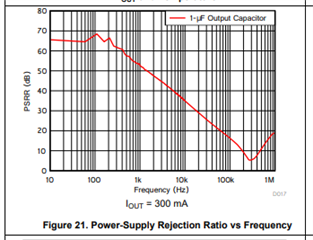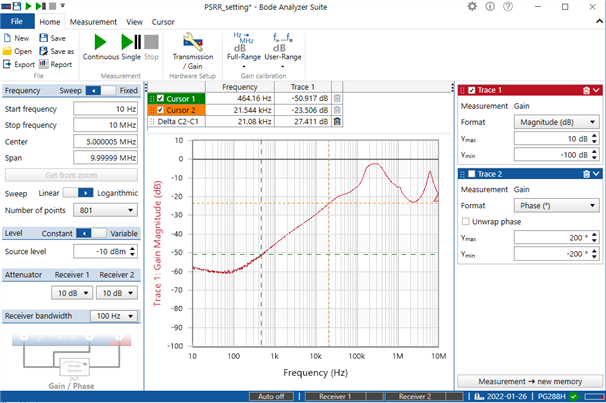Hi, I was trying to measure the PSRR of TLV743P with below configuration
1. Cin = Cout = 0402/X5R/1uF/6.3V capacitor
2. Vin = 2.3V, Vout = 1.8V, I-load = 300mA
May i know if this is the correct operating condition for the PSRR measurement shows in the datasheet
If it's not, can you help to let me know what is the proper condition to use to get the correct PSRR result from the experiment?
The result i got from bode 100 shows below:

the result is lower than datasheet about
5-10 db @ 100Hz
5 db @ 10kHz
100kHz is similiar with the plot but the not match with the EC table
I was trying to get the same result compare with fhe datasheet

The EC table show that:

The table seems to be typo for the 100kHz result? which should be about 18dB?
Here is the capture of my bode setting for the measurement, i would also like to know if there are issues with my bode 100 configuration if you have suggestions

Can you help to let me know if there are difference between the operating condition compare with datasheet from the previous description?
Please let me know if there are suggestions from your side, thanks a lot.

